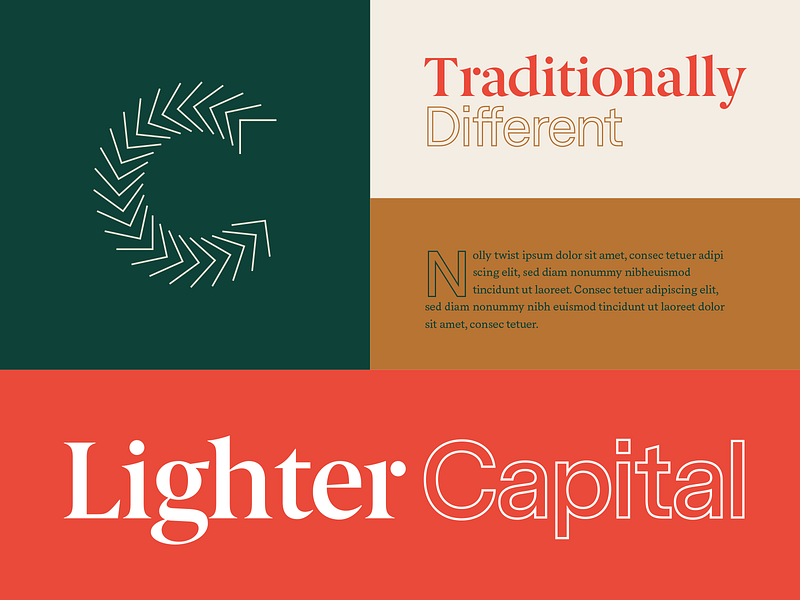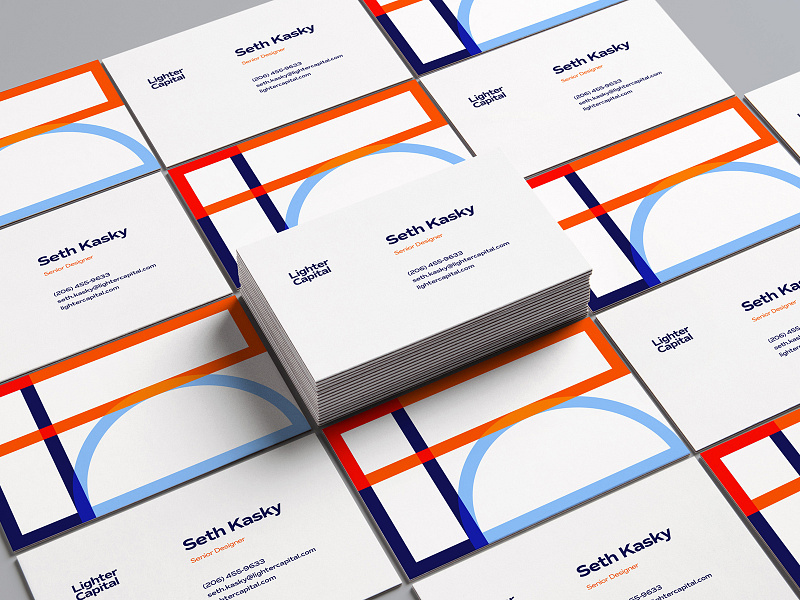Summer Teal Simpson Hitch is a Brand Strategist at Focus Lab, a strategic creative studio based out of Savannah, Georgia. As a Brand Strategist, Summer is the first point of contact on all branding projects and works closely with clients to interpret their needs, identify design challenges, and recommend the scope of work and design approach for the production phases of a project.
In this article, Summer shares how her team at Focus Lab uses psychological approaches to effectively sell their designs and improve client experiences. Whether you’re a freelancer or part of a design team, these six tips will help you think about the ways you can alleviate common pain points with clients and make the entirety of a project a more enjoyable and productive experience for everyone involved.

There are tons of theories on how to approach textbook brand strategy; but there are far fewer on the steady, project-long application of it. Since any strategy is only as valuable as it is useful, how can you ensure that your clients understand and embrace brand strategy direction and the design work that emerges from it? Going one step further, how can you anticipate and strategically appease any psychological pain points around the client experience that would otherwise serve as a barrier of resistance? That’s a loaded question. But in my dogged attempts to answer that over the years, I’ve come up with some best practices:
Start with a solid foundation
Brand strategy should serve as a vital tool in building trust and buy-in from design project stakeholders. It should establish a rationale and foundation for the design work ahead and should link the things most clients know (their backstory, identity, offerings, audience, competitors) with the things they don’t (the ways in which design could and should deliver for them). It should create a basecamp of agreement for the project team and a strong launching point for the explorations to come.
In action, the best brand strategy should act as a breadcrumb trail for the client, gently leading them down the path of information gathering, research, analysis, and then to synthesis and direction. As we’ve all learned the hard way, design is subjective and clients often have opinions that aren’t rooted in design understanding. The strategy then becomes your foundation, your foothold to perform like a bumper at a bowling alley: not overpowering or dictating design, but helping set a system to evaluate design relevance.
Tailor the process to your client’s needs
A key way to earn the trust of your clients is to tailor your process to their needs. As cheesy as it sounds, personality tests can go a long way in helping you do that. We use a DISC analysis and require all participants (yes, even the CEO) to take them before the project. This ensures that we understand whether they are a high D—interested in quickly deciding between fewer, curated recommendations, versus a high C—meticulous, hand-wringing, and shy to commit.
This impacts our decision making significantly, giving us a clear understanding of how social, hesitant, honest, or impatient a client is apt to be. It helps us decide whether to deliver more or less, to be more prescriptive or more collaborative. The sooner an agency can tailor their processes and deliverables to the specific needs of their clients, the better.
Using this method, the client is empowered with insight on the potential impacts of their behavioral patterns, and how they can temper those for a more profitable outcome. We have honest, open conversations with our clients around their DISC profiles. “Is there something you’re holding back because you’re afraid to make waves? [Because we know that people with High S’s are likely to do that.]” Or, “Do you want to forgo the meeting on Tuesday given the feedback you already provided online? [Because you’re a High D who never wants to waste time.]”
Comfort clients with awareness
For many of our clients, design is scary, because people fear what they don’t understand. They’ve also taken a big leap of faith investing a chunk of money into a design project with, usually, new partners. The whole thing inspires vulnerability—and you know what comforts vulnerability? Feeling aware.
With that in mind, every stage of our process has become an opportunity to educate our clients and provide them with the understanding they need to feel more comfortable. After a lead signs on to a project, we send a series of introductory videos outlining key terms used in brand design, the specifics of the project and who is involved, how our process unfolds (including real-life visual examples of the work of their lead designer), and best practices for project success. At the beginning of each week, we create awareness for the client around what we’re working on and where we are in the overall timeline. We also set expectations for the deliverables they should expect that week and what involvement we anticipate from them. Because we want to empower clients to feel like part of the process, to feel respected, and to enjoy the ride instead of feeling overwhelmed, we ensure that they are always in the know.
Demonstrate proficiency
Great design solutions can thrive or die depending on how confident your team is. If you’ve hit the proverbial “sweet spot,” you know it. And, more often than not, your client can feel that too. So, seek your own mechanisms for confidence. Brand Strategy guru Marty Neumeier says, ”Make a sketch, construct a model, or assemble a prototype. Then another. And another. With each attempt, you’ll reveal new possibilities for innovation. Your mind will talk to your hands, and your hands will talk to your mind. This dialogue is called generative thinking, and it happens only when you’re making something. It’s the active ingredient in design.”
For me, it’s also the active ingredient in feeling confident in my work. Don’t work a problem to death, but truly explore solutions and demonstrate proficiency. For strategists, that means breaking the problem into different pieces, seeking answers in unusual places, and training yourself to think outside the box. For designers, that means ideation and exploration: creating work and more work, using different design mediums, and allowing your creativity to defeat your ego until you ultimately feel satisfaction in the story you’re preparing to deliver.
Create familiarity
If there is something to be said for repetition in creation, there is also something to be said for repetition in delivery. On multiple projects over the past five years, I’ve seen clients hesitate at new brand visuals that are otherwise a terrific solution for them. While we will work to push that look in new directions, we often continue to show them the work we are passionate about, somewhat shepherding them—gently and respectfully—in a direction that our professional expertise tells us will suit them well.
It’s important to remember that people love change until it affects them. So the more you show them something, the more familiar it becomes, and the more they are able to judge it on its quality rather than their own fear to commit to change.
Present relatably, and successfully
How you present to clients is vital and should be taken into careful consideration. As much as client personalities can dictate our processes, so should their learning styles. People typically fall in one or two of the following six buckets: visual, verbal, aural, physical, logical, or social. This article breaks it down really well, but the thing to understand most is that people need to consume information in different ways to understand and interpret it. For that reason, it would benefit your creative team to think broadly about the ways in which you engage and relate to your clients via deliverables.
At Focus Lab, we standardly deliver a visual presentation (visual) accompanied by a video walkthrough (aural) and clients then submit feedback in writing (verbal). We challenge ourselves to make brand strategy, verbal identity, or messaging deliverables more visual; and we likewise challenge ourselves to make design rounds more verbal. The social aspect comes as a result of their stakeholder team and shared project meetings. In short, client communication should ultimately be as strategic as any design process. As an example, clients with physical and social learning styles often benefit from a conversation channel like Slack, which makes them feel more actively engaged in the process. It can also lead to a cultivated personal relationship.
Another thing to remember is showing real-time work-in-progress can start to erode the storytelling and the way that story unfolds, resulting in a more subjective evaluation. It can also result in what I affectionately call “Walmart eyes;” when you’ve seen so much you can’t effectively take anything in. This rarely results in the desired outcome, so be sure the work you are showing is still curated, polished, and reflective of strategy and storytelling.
There are countless more considerations that I haven’t accounted for here. Driven agencies should routinely self-audit to evaluate their unique client experiences and pain points. We’ve realized that there are some lessons only learned through tenure, and yet, there are also lessons invisible to veterans that only fresh eyes can see. Make process revision and client experience improvement a constant objective for everyone working within your team. At the end of the day, if your client awareness and overall strategy also factor in psychological pain points, the results should be abundantly measurable and the projects enjoyably productive.
Find Summer on Dribbble and on Twitter.
Find Focus Lab on Dribbble, Twitter, Instagram and at focuslabllc.com.
Find more Updates stories on our blog Courtside. Have a suggestion? Contact [email protected].











